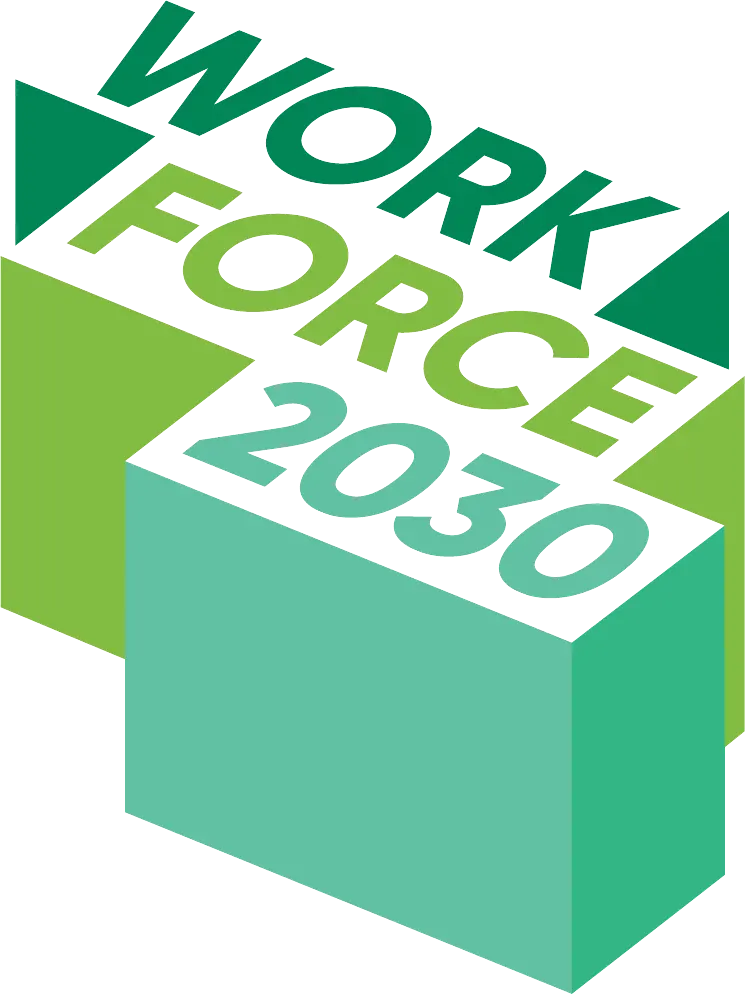Workforce 2030, onwards
At the beginning of this new year of continued uncertainty, I asked our Workforce 2030 coalition members and partners about their hopes and priorities for 2021. As the pandemic persists, workers’ health and safety, keeping the industry working, and the challenges of remote instruction remain significant concerns. Simultaneously, organizations are thinking about the long-term and the systemic changes needed in the building industry to strengthen resilience and take advantage of the opportunities that come with green, low-carbon building. Here are the main themes that came from these discussions:
Identifying and addressing skills gaps
Gaining a deeper understanding of green building design and construction knowledge and talent gaps is a priority for industry, educators, and researchers in the sector.
“At the Ontario Society of Professional Engineers (OSPE) we are looking at the next five years with a priority to identify knowledge gaps and develop solutions to address them,” said OSPE CEO Sandro Perruzza.
The Ontario General Contractors Association (OGCA) will work to better understand the requirements for general contractors as the industry transitions to retrofits and the adoption of green building standards. “Ultimately, our goal is to grow the workforce to meet the skills deficit,” said Giovanni Cautillo, OGCA CEO.
Understanding needs and providing programs to meet skills gap is also significant priority for environmental research and training organization ECO Canada, which is working on releasing a new study early in 2021 on workforce requirements for energy efficient buildings.
For the Toronto Region Board of Trade talent is key to regional competitiveness. “In 2021 we will be advocating for low-carbon workforce development for a green recovery and programs that address reskilling and upskilling our existing workforce to address skill gaps, while retaining our top talent,” said Roselle Martino, vice president of policy. A key vehicle for this work will be a Workforce Development Strategy for the Toronto region, developed with players in the workforce development industry across sectors, including design and construction.
Education providers begin 2021 with hopes for increased emphasis on low-carbon education. “I would like to see a renewed focus on the development and enhancement of skilled trades curriculum and funding to support improved learning in a low-carbon future,” said Tony Cupido, Sustainability Research Chair at Mohawk College.
Steve Shallhorn, executive director at the Labour Education Centre, says they will prioritize training both workers and management to work collaboratively to reduce emissions in the workplace through energy efficiency of buildings.
Equity, diversity and addressing racism
With priorities ranging from understanding systemic issues to changes in their own training and recruitment practices, Workforce 2030 participating organizations will increase focus on workforce diversity, equity and inclusion in 2021.
As a new collective of funders in workforce development, the Toronto Workforce Funder Collaborative will fund work that accelerates systemic change for a more equitable labour market and economy across the Greater Toronto Area. “I am hoping this year for more equitable labour market practices or at least a shift in that direction,” said xecutive Director Surabhi Jain.
Inclusive workforce practice begins at the organizational level. “Currently, we find ourselves part of a cycle in which experienced building professionals tend to be older white men because they are the ones who have been able to forge successful careers most easily over the past decades. We have decided that rather than hiring based solely on experience, we are going to hire with mentorship of new professionals built into our hiring plan,” says Chris Magwood, director at The Endeavour Sustainable Building School.
General contractors will look to better understand and address the barriers that underrepresented communities face in construction. “We are working within our industry to address issues of racism and end the stigma associated with a career in the construction trades,” said Cautillo.
A shift in public procurement
“It was encouraging to see the federal commitments towards zero-carbon government buildings and investment in building retrofits late last year,” said Akua Schatz, vice president of Advocacy and Market Engagement at Canada Green Building Council. “This shift by government will grow demand for green buildings, and create the predictability and volume of work that the sector needs to invest in training and to recruit for low-carbon building skills.”
A move away from a “lowest bid” mindset to allow for a broader consideration of social and environmental benefits is on Chris Magwood’s wish list for 2021. “We are hoping to see “green” criteria become part of the bidding process on government and corporate construction projects. We won’t be able to grow a green work force if the lowest bidder always gets the job. We feel it is time to include sustainability criteria within bids so that companies who know and understand green building are able to get the work that allows them to maintain and grow a leading-edge workforce,” said Magwood .
Toronto Regional Board of Trade’s Martino summed up: “We look at 2021 with a hope for a diverse talent ecosystem that supports a competitive, inclusive, and resilient green economy.”
With Workforce 2030 we’ll continue to champion green building practices and low-carbon workforce development as central to realizing this hope. Onwards!
By Juliana Dutkay
